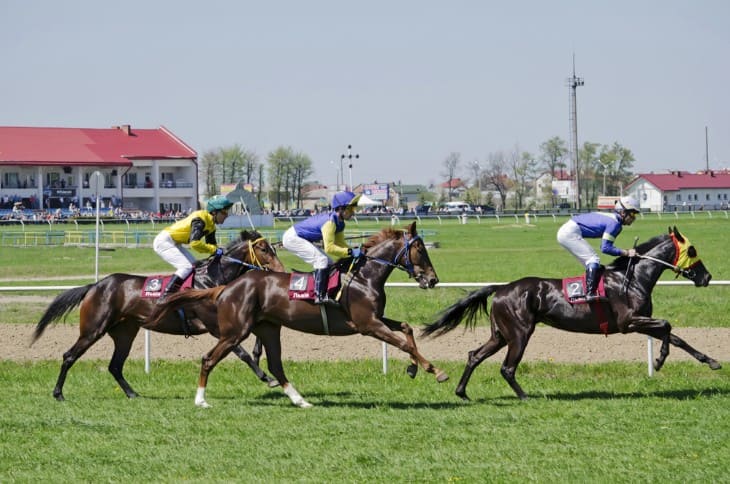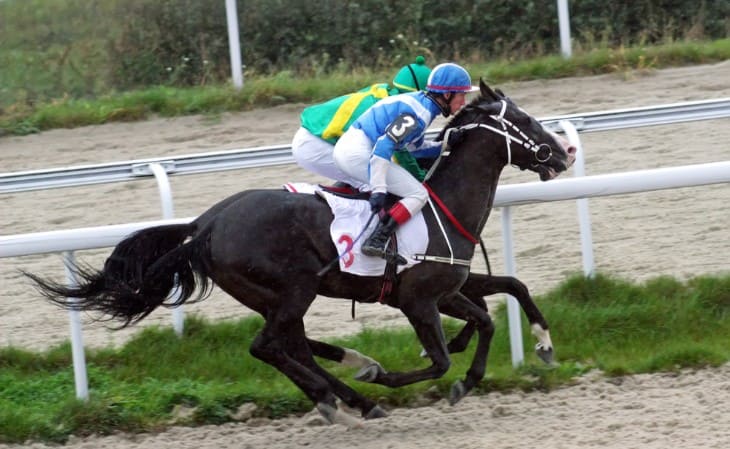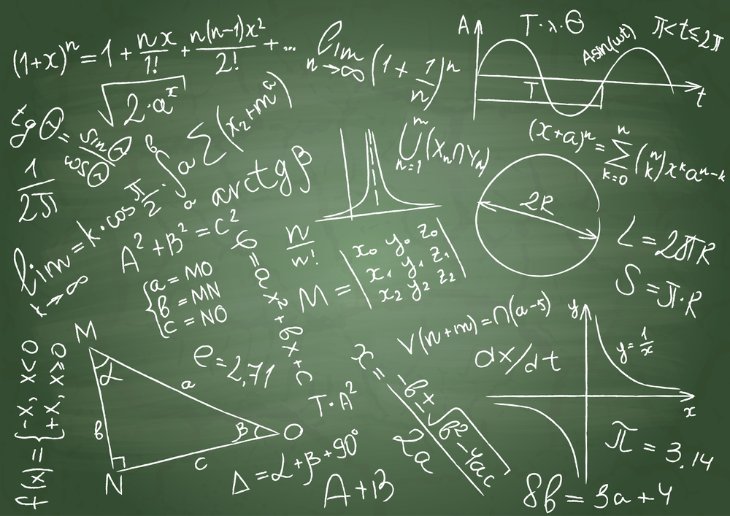The Intersection of Horse Racing and Mathematics
They may not seem like things that could have too many things in common but mathematics and horse racing are connected in so many ways. There are so many areas of horse racing that involve mathematics and the application of its concepts and techniques, especially when it comes to the analysis of different aspects of this sport. Bettors in particular like to use it to increase their chances of success, but trainers and owners don’t lag behind at all.
In sports, predicting outcomes equals predicting the future but as complex things can be, a deep understanding of many mathematical principles can make a significant difference in the quest for success in this sport.
Therefore, let’s cut the talk and take a little bit of a detailed look at different aspects of this intersection.
Handicapping and Probability
Handicapping and probability are some of the most basic aspects of the sport and the use of mathematics helps in many ways, starting from the likelihood of a success in a race. When we talk about handicapping, we are talking about evaluating various factors that influence the horse’s performance and that info serves us to predict its chances of winning in a race. Then, there is the probability, which is all about putting these chances in a numerical form.
Handicapping Factors:
Handicappers need to consider many factors when it comes to assessing potential performance, so let’s check some of them:
- Past Performances: First of all, it’s important to take a look at previous races, positions, times, speed figures and similar things.
- Jockey and Trainer Skill: Then, there is the matter of evaluation of athletes and others involved. We are primarily talking about jockeys and trainers, and their skills.
- Class Levels: Still, previous results won’t mean much if we don’t evaluate the level of these previous competitions.
- Track Conditions: Naturally, it’s crucial to analyse how a horse performs on certain surfaces and in certain weather conditions.
- Distance and Surface Preferences: Let’s not forget things like distance and surface preferences. We need to take into account whether a horse excels at certain race distances or track surfaces.
- Workouts and Fitness: Finally, none of the things above much we don’t take a look at horses form and physical conditions.
Probability and Odds:
When it comes to probability, things are pretty clear. We are talking about a mathematical concept used to quantify the likelihood of an event occurring. Speaking more commonly, we need to estimate the probability of a horse winning or finishing in a certain position. That’s what bookmakers do on a regular basis, and they express these estimations through odds. Odds, as you probably know, are here to represent a potential payout relative to your wager. In practice, lower odd numbers mean a higher probability of winning.
Of course, the best way is to explain through an example, so let’s take one: let’s say that a horse has odds of 3:1. That means it is expected to win the race about one out of every four times, based on the bookmakers' assessment. If we use mathematical language, that would be:
Probability of Winning = 1 / (1 + Odds)
Speed Figures and Time Analysis
For both bettors and bookmakers, things like speed figures and time are quintessential. That’s how everyone gets insight into a horse’s actual capabilities. We are assessing potential performance based on previous times for completing races, which leads us to make informed bets.
Speed Figures:
When we talk about speed figures in particular, we are talking about the numerical aspect of a horse’s performance in a race. Simply said, we are talking about the time a horse needs to complete a certain distance. In that way, we get the opportunity to compare horses and their performance on different tracks and in different conditions.
And how is that usually done? Something like this:
- Raw Time: This would be the actual recorded time of a horse.
- Track Variant: Then, we make adjustments, in terms of the conditions on a race day.
- Distance Adjustment: The next step is to make adjustments in terms of longer or shorter distances. This can also impact the horse’s performance.
- Weight Carried: Another thing that we have to take into account and adjust is the weight carried.
- Class Adjustment: Let’s not forget that horses may compete at different levels of competition, so it’s necessary to make adjustments for the class level of the upcoming race.
Time Analysis:
Making informed bets is impossible without a proper time analysis. Some of the things we study are historical race trends, so we can learn about certain patterns and also identify trends.
- Comparative Analysis: For example, we can compare the times of different horses in a similar race or similar past performances.
- Track Records: Then, it’s time to evaluate how a certain time compares to the track record for the same surface and distance.
- Track Biases: We need to figure out track biases, which are consistent deviations from expected race times due to track conditions. For example, a track may favour front-runners or closers under certain conditions.
- Consistency: Analysing times over multiple performances helps us if a certain horse improves or declines in its performance.
Using Speed Figures and Time Analysis:
All in all, things like speed figures and time analysis serve both handicappers and bettors. Thanks to these things, we can find out which horses have consistently performed, no matter the specific conditions of a certain race. In that way, we learn about their chances in upcoming events. Also, there are jockeys and trainers who use this kind of analysis to track their progress, adjust training programs and make future decisions.
Regression Analysis
Just like any other sport, horse racing also has a lot to do with statistics, which leads us to mathematics. The importance of this field is critical in any modern sport and in horse racing, we are primarily talking about regression analysis. This method is about the relationship between one or more independent variables (also known as predictors) and a dependent variable (the outcome or response variable)
In other words, we use this kind of analysis to figure out different impacts on the horse’s performance. It’s not easy to understand, so it’s probably better to try to explain through examples:

Types of Regression Analysis:
- Linear Regression: With linear regression, we are modelling the relationship between independent and dependent variables using a straight line. For example, it could be used when we want to model the relationship between a horse’s past performance and its finishing position in a race.
- Multiple Regression: Besides linear, there is also a multiple regression, when we have more independent variables. That may be the case when we want to find out how a combination of jockey skills, track condition and recent workout affects a horse’s performance.
- Logistic Regression: This method is also essential because it offers two possible outcomes. It is a binary method that determines whether a horse wins a race or not. In other words, we use it to model the binary outcome, based on independent variables.
Steps in Regression Analysis:
- Data Collection: Of course, we start with gathering relevant data on the variables.
- Data Preparation: Then, it’s time to clean and preprocess the data, to handle missing values and outliers.
- Model Building: Now we chose one of the regression types and specified the independent variables to build the regression models.
- Model Evaluation: This is followed by the evaluation of metrics like coefficient of determination, p-values and similar things.
- Interpretation: After we’re done with modelling it’s time for the interpretation of the relationship between independent and dependent variables.
- Prediction and Inference: Finally, it’s time to use the regression model to make predictions.
Applications in Horse Racing:
There are so many ways we can apply these types of regression:
- First of all, we can see how different factors contribute to a horse’s speed and performance.
- Of course, we can also predict a horse's odds of winning a race, because we know its recent form and relevant factors.
- Then, there is the investigation of the relationship between a horse's performance and its breeding, training regimen, or race distance preferences.
- Finally, we can learn more about track biases and their impact.
Limitations and Considerations:
With everything we’ve said, it’s obvious that this analytic method is a pretty powerful tool. We could say it enables the exploration of relationships between variables and the prediction of outcomes. And, when used alongside other handicapping techniques, we are pretty sure it can contribute to more informed decisions by providing a quantitative understanding of how different factors impact a horse's performance.
Monte Carlo Simulations
Computer simulations are highly beneficial in horse racing and Monte Carlo is definitely among the most popular ones. It is a technique we use to analyse a large number of random samples to simulate possible outcomes. We can use it to predict race outcomes, but also to assess betting strategies. Moreover, we can even analyse different factors that can affect a horse’s performance.

How Monte Carlo Simulations Work:
Basically, there are no more than a few steps:
- Define Parameters: First, we have to identify the variables and factors that influence the system you want to model. This refers to things like horse performance metrics, jockey skills, track conditions, and more.
- Generate Random Samples: Then, it’s time to create a large number of random samples (iterations) for each variable within its defined range. In that way, we get different possible scenarios or outcomes.
- Model the System: The next step is to apply the defined rules and relationships to each set of random samples to simulate the system's behaviour. Simply said, we are simulating races based on random samples of horse performance and other factors.
- Analyse Results: Then, it’s time to collect and analyse the data, which helps us with probabilities, averages, variances and similar things.
- Draw Conclusions: Finally, let’s draw conclusions. In that way, we can make predictions based on the simulation.
Applications in Horse Racing:
- Race Outcome Prediction: Simulate races using random samples of horse performance, track conditions, and other factors. In that way, you can estimate the probability of each horse winning, placing, or showing.
- Betting Strategy Analysis: Assess different betting strategies by simulating numerous races and tracking the success of each strategy over time. This allows you to determine optimal betting amounts and approaches.
- Track Bias Analysis: You can simulate races with varying track bias scenarios to understand how different biases may impact race outcomes and help bettors adjust their strategies accordingly.
- Handicapping Strategy Testing: This is the way to find out the effectiveness of different handicapping factors and combinations - by simulating races under various conditions.
- Risk Management: It’s always good to evaluate potential risks and uncertainties associated with specific bets or race scenarios.
Limitations and Considerations:
- Logically, the biggest limitation is the fact that the accuracy of the simulations depends on the accuracy of the input data and the assumptions made in the model.
- Complex simulations can be computationally intensive and time-consuming.
- Simulating rare events accurately may require a very large number of iterations.
- Simulations cannot account for unforeseen events or variables that were not included in the model.
Despite these limitations, Monte Carlo simulations provide a valuable method for analysing and understanding complex systems like horse racing. When used thoughtfully and in conjunction with other handicapping techniques, they can actually provide insights and you can improve your decision-making and strategy.
Track bias Analysis
Let’s not forget track bias analysis - a critical technique in horse racing that involves identifying and quantifying consistent deviations from expected race results due to track conditions. Tracks usually develop biases that favour certain running styles or positions on the track. We are talking about factors such as weather, maintenance, and previous races. When you analyse track biases, you can make more accurate predictions and adjust their strategies accordingly.
By studying historical race data, we can detect patterns where horses with a specific running style (e.g., frontrunners, closers) tend to perform better under certain conditions. In some cases, a track bias might favour frontrunners on a particular day due to a fast and dry surface. With this insight, we can prioritise horses with compatible running styles and anticipate potential upsets or favoured outcomes.
Track bias analysis isn’t a simple thing. It involves comparing actual race results with expected outcomes based on historical data and assessing the consistency of the deviations. We are talking about a combination of statistical analysis and an understanding of track conditions. When achieved and properly applied, track bias analysis can provide a significant edge in handicapping, and we can make more informed selections and ultimately improve our chances of winning.
Genetics and Breeding
Trainers and jockeys are important but eventually, it all comes down to a horse’s quality, which leads us to genetics and breeding. Everyone is aiming to produce superior racehorses by harnessing hereditary traits. And, analysing genetics involves studying the inheritance of performance-related attributes, such as speed, endurance, and temperament, from parent horses to their offspring. With the application of generic principles, we are enhancing the probability of the production of racehorses with the biggest potential for success.
Thanks to modern breeding techniques, breeders can make more informed decisions and enhance the likelihood of minimising undesirable traits. With statistical methods and simulations, they can predict potential outcomes of certain mating combinations and estimate the probability of getting high-performing progeny.
Still, this isn’t the ultimate solution for horse racing. While breeding can set the stage for a horse's potential, there are many other things to consider. Factors such as training, nutrition, and environmental conditions also play major roles. Finally, effective breeding requires a balance of scientific knowledge and practical experience, as breeders strive to align genetic potential with the rigorous demands of the racetrack.
Summary
In this short article, we've explored the dynamic intersection of mathematics and horse racing. Mathematical techniques, such as regression analysis, probability, and stochastic processes can help a lot in predicting race outcomes, assessing betting strategies, and analysing the intricate interplay of factors like genetics, track bias, and speed analysis. Handicappers utilise speed figures and time analysis to gauge performance, while bettors can use Monte Carlo simulations for predictive insights and risk assessment. All these tools enhance decision-making, but let’s not neglect that they coexist with the inherent unpredictability of horse racing. In other words, the blend of mathematical insights and experiential understanding are both required for success in this sport.








